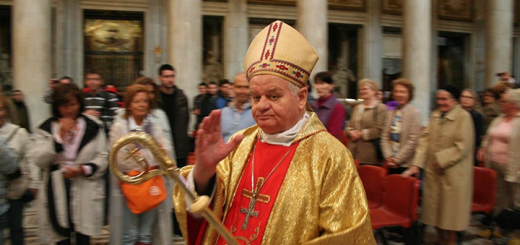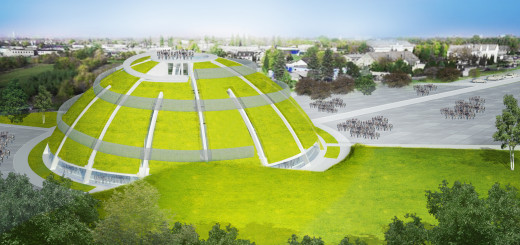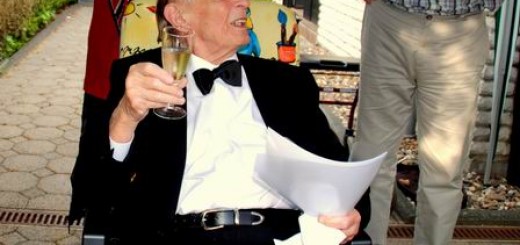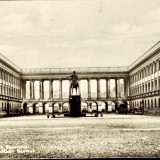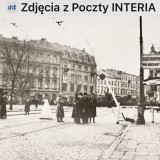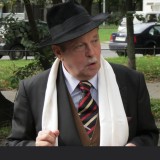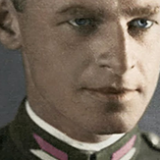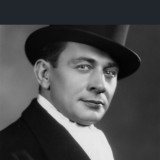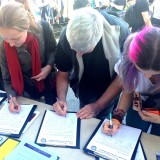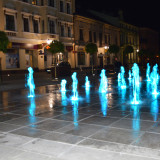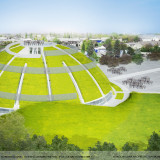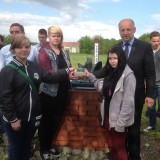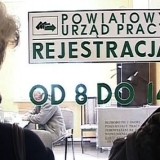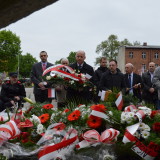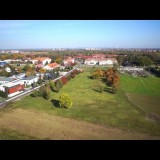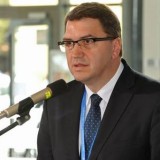List JE Ks. Biskupa Tadeusza RakoczegoLetter from Bishop Tadeusz RakoczyLetter from Bishop Tadeusz Rakoczy
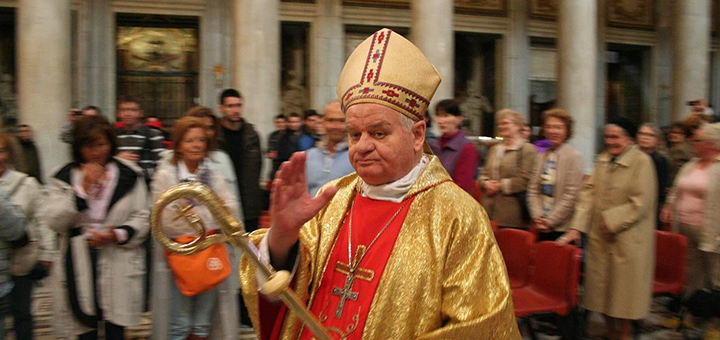
JE Ks. Biskup Tadeusz Rakoczy wyraził swoje poparcie dla powstającego Kopca – Centrum Pokoju w Oświęcimiu.
27 stycznia, w niedzielę, w kościołach Diecezji Bielsko-Żywieckiej odczytany został List – Słowo JE Ks. Bp. Tadeusza Rakoczego – Ordynariusza Diecezji Bielsko – Żywieckiej w sprawie poparcia dla powstającego Kopca Upamiętnienia i Pokoju – Centrum Pokoju w Oświęcimiu. Poniżej zamieszczamy kopię tego Listu.
Osoby zaangażowane w ideę powstania Kopca Upamiętnienia i Pokoju w Oświęcimiu, wszystkich wspierających to dzieło i wszystkich Was – bracia i siostry – na progu Nowego roku z serca błogosławię.
JE Ks. Biskup Tadeusz Rakoczy
Na tą okoliczność przygotowana została również niewielka gazetka z zaproszeniem oraz błogosławieństwem księdza Biskupa.Bishop Tadeusz Rakoczy concerning the construction of a Peace Mound Centre in Oświęcim (for reading on Sunday, January 27, 2013).
Translation – Margit Hawkes / Bishop of Bielsko – Zywiec
Dear Brothers and Sisters in Christ,
Exactly 68 years ago, on 27 January 1945, the concentration and extermination camp Auschwitz-Birkenau was liberated. In 1992, we established our diocese of Bielsko-Zywiec, with its patron Saint Maximilian Maria Kolbe – the martyr of Auschwitz. By the will of God and that of our beloved Holy Father John Paul II, I was appointed as the first bishop of the diocese. Since the beginning of my episcopal ministry I often pray together with the faithful, guests of the diocese and the few remaining witnesses of the tragic events of World War II, at the former Nazi death camp Auschwitz-Birkenau for the victims of that terrible time, and for the peace of our country, Europe and the world.
For over 14 years I have known about the idea of creating a Mound of Remembrance and Reconciliation, which was presented in the last decade of the twentieth century by Prof. Szajna – a former prisoner of concentration camp Auschwitz. In personal and communal prayer with the former prisoners of CC Auschwitz-Birkenau and the participants of the solemn anniversary at the Death Wall, in the cell of St. Maximilian Kolbe, martyr, and since 2007, after the ceremonial laying of the foundation stone in the selected area, I ask merciful God for success in meeting the legitimate needs of this special place by implementing the concept of the Mound. It is also a response to the requests of many former prisoners of concentration camps and the Gulag.
Of particular note is the request of Dr. Janusz Mlynarski, a former prisoner of CC Auschwitz from the first transport of 14th June 1940, and an eye-witness of the roll call at which Franciscan St. Maximilian Kolbe replaced Francis Gajowniczek on his way to death by starvation in cell block 11. Dr. Janusz Mlynarski, who despite his age of 90 years, is still engaged in the concept of the Mound of Remembrance and Reconciliation—a Mound against forgetting and for peace in Oświęcim – an idea supported over the years by numerous contemporary witnesses – is being realized finally.
This idea is now in the consciousness of many people thanks to the concrete steps that have been undertaken and the consistent and calm publicity campaign in Poland and abroad and also to the important technical and legal preparatory work which was necessary before starting the long-awaited construction phase.
The recently deceased President of the Polish Union of Seniors, an organization affiliated to the European Senior Citizen’s Union, Mr. Henry Łagodzki—a soldier of Witold Pilecki in the Warsaw Uprising and a former prisoner in CC Warsaw and other concentration camps—had left a will, in which he asks everyone … that in June 2013 can begin finally the implementation of this noble idea of peace. And further: On the 16th of June 2013 it is planned to start the first spadework and the building of the Peace Centre—Mound of Remembrance and Peace in Oświęcim. On this date, which has a special personal meaning to me, after 80-years of tragic consequences for the Poles, Europeans and for the world, the date of the rise to power of the obsessed Hitler, the commemoration of the 60 million who were killed in World War II, in Oświęcim—the City of Peace, it will have a very symbolic meaning after the „Hell of Auschwitz-Birkenau” that was created here in the years 1940 – 1945.
The late Henryk Łagodzki also wrote in his will: Every day at 7.00 am, the Pauline Brothers and pilgrims pray in front of the miraculous image of the Black Madonna for the creation of the Peace Centre—Mound of Remembrance and Peace in Oswiecim. I believe so strongly that, despite my recall to the House of the Lord, Our Lady of Jasna Góra will ensure that you all will be working together—the residents of Oświęcim — City of Peace, people of different churches and religions, various organisations, offices and institutions, representatives of the media and individuals – opening the way to ensure that Oświęcim, from the site of the global catastrophe of the concentration-camp Auschwitz-Birkenau in the Second World War, from the symbol of the downfall of humanity, becomes a real place of effective activities for freedom for Poland, Europe and the whole world.
May Oświęcim establish an example for reconciliation that extends across Poland and all the countries of the world, so that people may live, learn and work in peace and resolve emerging problems through dialogue.
Dear people of our Diocese,
I am convinced that this request of the late Mr. Henryk Łagodzki deserves great respect and commitment from all of us for our good, and the good of future generations of the members of our diocese, in Poland, Europe and around the world. In this respect, I need your support in prayer and your material support. The contributions offered today in the boxes located in the front of the church will be given to the Peace Mound Centre.
The people involved in the idea of creating the Mound of Remembrance and Peace in Oświęcim, all people supporting this work, and all of you – brothers and sisters – I bless you from my heart at the beginning of the New Year.
Tadeusz Rakoczy, Bishop / Bielsko – Biala, January 8, 2013
(money collected in the boxes should be given to the Curia cash office)
Translation – Margit Hawkes / Bishop of Bielsko – Zywiec
Dear Brothers and Sisters in Christ,
Exactly 68 years ago, on 27 January 1945, the concentration and extermination camp Auschwitz-Birkenau was liberated. In 1992, we established our diocese of Bielsko-Zywiec, with its patron Saint Maximilian Maria Kolbe – the martyr of Auschwitz. By the will of God and that of our beloved Holy Father John Paul II, I was appointed as the first bishop of the diocese. Since the beginning of my episcopal ministry I often pray together with the faithful, guests of the diocese and the few remaining witnesses of the tragic events of World War II, at the former Nazi death camp Auschwitz-Birkenau for the victims of that terrible time, and for the peace of our country, Europe and the world.
For over 14 years I have known about the idea of creating a Mound of Remembrance and Reconciliation, which was presented in the last decade of the twentieth century by Prof. Szajna – a former prisoner of concentration camp Auschwitz. In personal and communal prayer with the former prisoners of CC Auschwitz-Birkenau and the participants of the solemn anniversary at the Death Wall, in the cell of St. Maximilian Kolbe, martyr, and since 2007, after the ceremonial laying of the foundation stone in the selected area, I ask merciful God for success in meeting the legitimate needs of this special place by implementing the concept of the Mound. It is also a response to the requests of many former prisoners of concentration camps and the Gulag.
Of particular note is the request of Dr. Janusz Mlynarski, a former prisoner of CC Auschwitz from the first transport of 14th June 1940, and an eye-witness of the roll call at which Franciscan St. Maximilian Kolbe replaced Francis Gajowniczek on his way to death by starvation in cell block 11. Dr. Janusz Mlynarski, who despite his age of 90 years, is still engaged in the concept of the Mound of Remembrance and Reconciliation—a Mound against forgetting and for peace in Oświęcim – an idea supported over the years by numerous contemporary witnesses – is being realized finally.
This idea is now in the consciousness of many people thanks to the concrete steps that have been undertaken and the consistent and calm publicity campaign in Poland and abroad and also to the important technical and legal preparatory work which was necessary before starting the long-awaited construction phase.
The recently deceased President of the Polish Union of Seniors, an organization affiliated to the European Senior Citizen’s Union, Mr. Henry Łagodzki—a soldier of Witold Pilecki in the Warsaw Uprising and a former prisoner in CC Warsaw and other concentration camps—had left a will, in which he asks everyone … that in June 2013 can begin finally the implementation of this noble idea of peace. And further: On the 16th of June 2013 it is planned to start the first spadework and the building of the Peace Centre—Mound of Remembrance and Peace in Oświęcim. On this date, which has a special personal meaning to me, after 80-years of tragic consequences for the Poles, Europeans and for the world, the date of the rise to power of the obsessed Hitler, the commemoration of the 60 million who were killed in World War II, in Oświęcim—the City of Peace, it will have a very symbolic meaning after the „Hell of Auschwitz-Birkenau” that was created here in the years 1940 – 1945.
The late Henryk Łagodzki also wrote in his will: Every day at 7.00 am, the Pauline Brothers and pilgrims pray in front of the miraculous image of the Black Madonna for the creation of the Peace Centre—Mound of Remembrance and Peace in Oswiecim. I believe so strongly that, despite my recall to the House of the Lord, Our Lady of Jasna Góra will ensure that you all will be working together—the residents of Oświęcim — City of Peace, people of different churches and religions, various organisations, offices and institutions, representatives of the media and individuals – opening the way to ensure that Oświęcim, from the site of the global catastrophe of the concentration-camp Auschwitz-Birkenau in the Second World War, from the symbol of the downfall of humanity, becomes a real place of effective activities for freedom for Poland, Europe and the whole world.
May Oświęcim establish an example for reconciliation that extends across Poland and all the countries of the world, so that people may live, learn and work in peace and resolve emerging problems through dialogue.
Dear people of our Diocese,
I am convinced that this request of the late Mr. Henryk Łagodzki deserves great respect and commitment from all of us for our good, and the good of future generations of the members of our diocese, in Poland, Europe and around the world. In this respect, I need your support in prayer and your material support. The contributions offered today in the boxes located in the front of the church will be given to the Peace Mound Centre.
The people involved in the idea of creating the Mound of Remembrance and Peace in Oświęcim, all people supporting this work, and all of you – brothers and sisters – I bless you from my heart at the beginning of the New Year.
Tadeusz Rakoczy, Bishop / Bielsko – Biala, January 8, 2013
(money collected in the boxes should be given to the Curia cash office)



